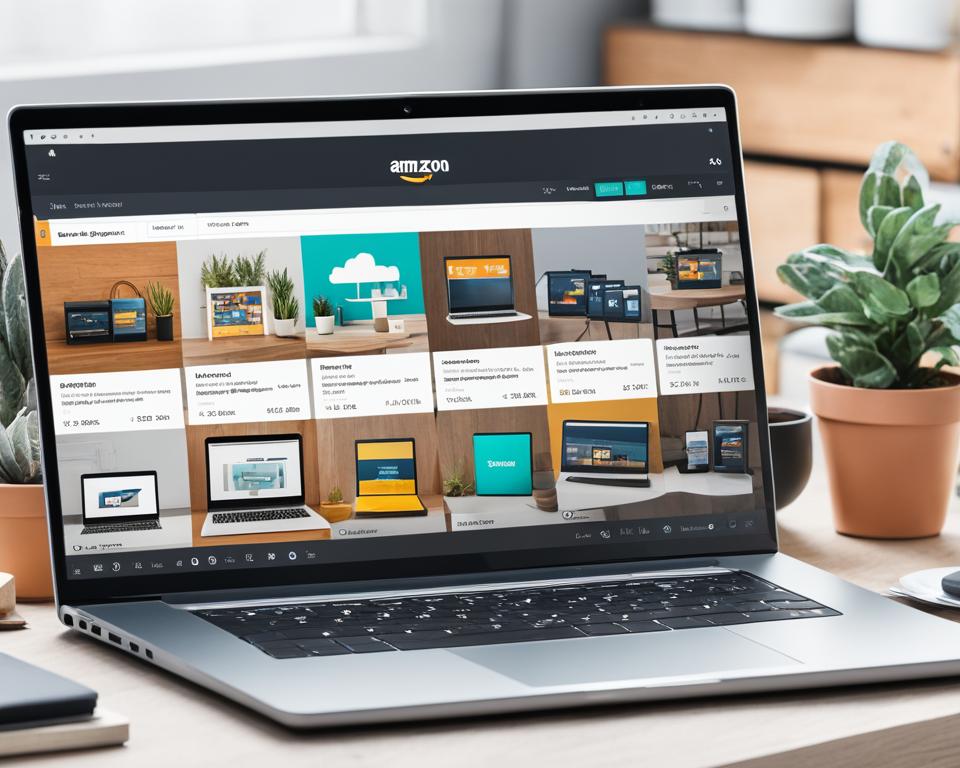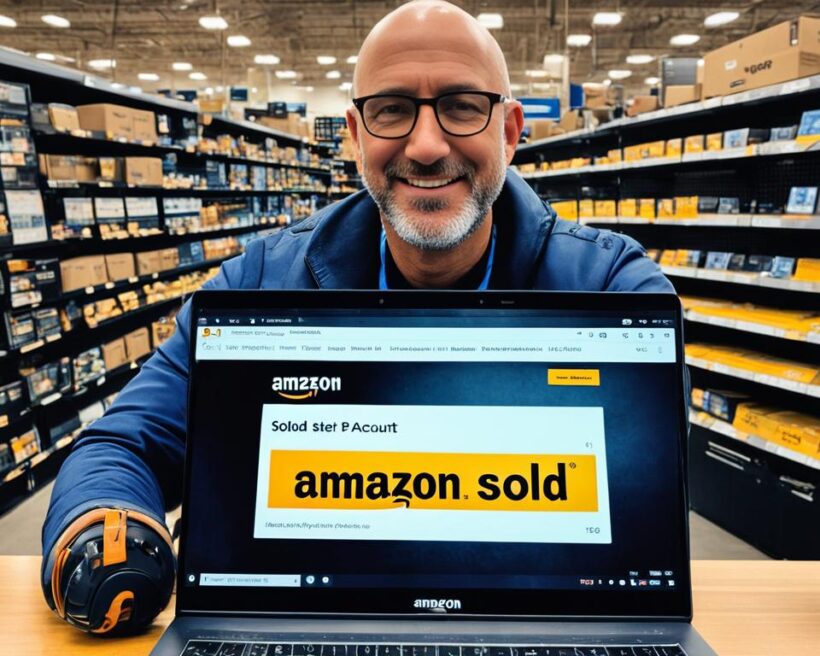Selling on Amazon without inventory is an innovative business model that provides entrepreneurs with a cost-effective and accessible way to enter the e-commerce market. This approach enables sellers to list and sell products on Amazon without the need to hold physical inventory. Instead, when a customer places an order, the seller purchases the product from a third-party supplier, who then directly ships it to the customer. By eliminating the need for upfront inventory costs and warehousing space, selling without inventory on Amazon opens up a world of opportunities for aspiring business owners.
With various methods and strategies available, selling on Amazon without inventory has become increasingly popular. It allows individuals to tap into Amazon’s vast customer base and leverage the platform’s reputation as the world’s largest online marketplace. Whether you’re a first-time entrepreneur or an established business owner looking to expand, selling without inventory on Amazon can potentially offer a profitable avenue for growth and success.
In this article, I will explore the concept of selling on Amazon without inventory in more detail, providing insights into the basics, differences from traditional selling methods, the role of third-party fulfillment, different methods to sell without inventory, the importance of product selection, and more. By the end, you’ll have a comprehensive understanding of how to navigate the Amazon marketplace without the need for physical inventory.
The Concept of Selling on Amazon Without Inventory
Selling on Amazon without inventory is a revolutionary business model that has transformed the e-commerce landscape. This concept allows entrepreneurs to sell products on Amazon without the need to hold physical inventory. Instead of purchasing and storing products beforehand, sellers list their products on Amazon’s platform and wait for customer orders to come in. When an order is received, the seller buys the product from a third-party supplier who takes care of the fulfillment and shipping process.
This inventory-free selling on Amazon offers numerous advantages to sellers. First and foremost, it eliminates the need for upfront investment in inventory, avoiding the associated costs and risks. Sellers can start their Amazon business without large capital requirements and focus on advertising, marketing, and customer service.
“Selling on Amazon without inventory allows me to run a profitable business without the headache of managing stock and storage. It’s a game-changer for entrepreneurs like myself.”
The reliance on third-party suppliers is crucial in this model. Sellers must establish reliable relationships with suppliers who can fulfill orders promptly and efficiently. Trust and communication are key to ensuring a smooth process and maintaining customer satisfaction. Additionally, sellers must carefully manage their product listings, ensuring accurate descriptions and timely updates to avoid any discrepancies in stock availability.
With inventory-free selling on Amazon, entrepreneurs can enter the e-commerce market with minimal risk and investment. It levels the playing field for aspiring business owners and empowers them to compete with larger, established sellers. However, it is essential for sellers to continuously monitor their sales, manage supplier relationships diligently, and keep a close eye on market trends to maximize their success.
Next, let’s explore the basics of selling on Amazon and how it can be leveraged to reach a wider customer base.
Comparison of Inventory-based Selling and Inventory-free Selling on Amazon
| Inventory-based Selling | Inventory-free Selling on Amazon |
|---|---|
| Requires upfront investment in inventory | Eliminates upfront inventory costs |
| Requires storage space for inventory | No need for warehousing or storage |
| Sellers handle order fulfillment and shipping | Third-party suppliers handle fulfillment and shipping |
| Greater control over inventory and shipping process | Reliance on third-party suppliers for fulfillment |
| Higher risk and financial commitment | Lower risk and financial commitment |
Understanding the Basics of Selling on Amazon
Selling on Amazon is a dynamic and lucrative opportunity for businesses to reach a wide customer base and tap into the booming e-commerce market. As the world’s largest online marketplace, Amazon provides sellers with a platform to list products, manage customer interactions, and fulfill orders. Understanding the basics of selling on Amazon is essential for sellers looking to expand their reach and maximize their sales potential.
When selling on Amazon, businesses have the advantage of accessing millions of potential customers who visit the platform daily. Whether it’s selling unique handcrafted items or branded merchandise, Amazon offers a diverse range of categories and products to cater to various consumer needs. Sellers can benefit from the credibility and trust associated with the Amazon brand, generating increased visibility and attracting a larger customer base.
One of the key advantages of selling on Amazon is the simplicity of the process. Sellers can create product listings, describe their items, set competitive prices, and start selling to customers from around the world. With Amazon’s user-friendly interface and seller tools, managing inventory, tracking orders, and handling customer inquiries has never been easier. Additionally, Amazon’s robust fulfillment network provides sellers with options to streamline their operations, such as the popular Fulfillment by Amazon (FBA) service.
Implementing effective strategies to optimize product visibility is crucial when selling on Amazon. The platform utilizes algorithms that determine the ranking and visibility of products based on factors such as sales performance, customer reviews, and keyword relevance. By employing search engine optimization techniques, sellers can improve product discoverability and increase their chances of reaching potential customers who are actively looking for their products.
“Selling on Amazon allows businesses to expand their customer reach and capitalize on the extensive online marketplace. Understanding Amazon’s platform, optimizing product visibility, and utilizing fulfillment options contribute to successful selling experiences.”
Selling on Amazon – Key Takeaways:
- Amazon is the world’s largest online marketplace, offering sellers access to a vast customer base.
- Selling on Amazon involves listing products, managing customer interactions, and fulfilling orders.
- Amazon provides user-friendly interfaces and tools to simplify inventory management and order tracking.
- Optimizing product visibility through search engine optimization techniques is crucial for success on Amazon.

| Advantages of Selling on Amazon | Key Considerations |
|---|---|
| Access to a vast customer base | Understanding Amazon’s platform and policies |
| Branding opportunities | Optimizing product listings for discoverability |
| Ease of inventory management | Effectively managing customer interactions |
| Utilizing Amazon’s fulfillment services | Monitoring and responding to customer reviews |
Differences Between Selling with Inventory and Selling Without Inventory on Amazon
When it comes to selling on Amazon, there are two distinct approaches: selling with inventory and selling without inventory. These two methods have significant differences that can impact your business strategy and profitability on the platform.
Selling with Inventory: Traditional Selling on Amazon
Traditional selling on Amazon involves the conventional approach of managing your own inventory. As a seller, you purchase products in advance, store them in your own facilities, and handle the shipping process to customers when orders are received. This method gives you direct control over your inventory and provides flexibility in managing your product offerings.
However, selling with inventory requires significant upfront investment to purchase and store products. It also involves the logistical challenges of warehousing and fulfilling orders in a timely manner. Additionally, as inventory levels fluctuate, there is a risk of excess inventory or stockouts, which can impact your profitability and customer satisfaction.
Selling Without Inventory: Dropshipping and Fulfillment By Amazon (FBA)
Selling without inventory is an alternative approach that eliminates the need for sellers to hold physical products. There are two common methods for selling without inventory on Amazon: dropshipping and Fulfillment By Amazon (FBA).
Dropshipping: With dropshipping, sellers list products on Amazon that they don’t possess or physically stock. When an order is received, the seller purchases the product from a third-party supplier who handles the fulfillment and shipping directly to the customer. This method allows sellers to focus on marketing and customer service without having to worry about inventory management or shipping logistics.
Fulfillment By Amazon (FBA): Amazon’s FBA service offers another method of selling without inventory. Sellers send their products to Amazon’s fulfillment centers, and Amazon takes care of storage, packaging, shipping, and even customer service on their behalf. This method provides sellers with the benefits of Amazon’s robust infrastructure and logistical capabilities, allowing them to scale their business without the need for physical inventory.
Selling without inventory through dropshipping or utilizing Amazon’s FBA service reduces upfront costs and eliminates the need for warehousing and fulfillment operations. It allows sellers to focus on product selection, marketing, and providing excellent customer experiences.
| Selling with Inventory | Selling Without Inventory |
|---|---|
| – Requires upfront investment | – Reduces upfront costs |
| – Involves inventory management and storage | – Eliminates the need for warehousing |
| – Sellers have control over inventory | – Sellers rely on third-party suppliers or Amazon’s FBA |
| – Sellers handle shipping logistics | – Fulfillment and shipping are outsourced |
As an Amazon seller, it’s essential to consider your business goals, resources, and preferences when deciding whether to sell with or without inventory. Both methods have their advantages and challenges, and your choice will ultimately depend on what aligns best with your overall strategy.
The Role of Third-Party Fulfillment in Selling without Inventory
When it comes to selling without inventory on Amazon, third-party fulfillment services play a vital role in ensuring smooth operations. These services take care of crucial aspects like storage, packaging, and shipping, freeing sellers from the hassles of physical inventory management. One popular choice for third-party fulfillment is Amazon’s Fulfillment By Amazon (FBA) program, which allows sellers to leverage Amazon’s extensive logistics network for order fulfillment.
By partnering with a third-party fulfillment service like FBA, sellers can reap numerous benefits. Firstly, they can avoid the upfront costs associated with maintaining their own warehouse and inventory. This allows them to allocate resources to other critical areas of their business, such as customer service and marketing strategies. Additionally, outsourcing fulfillment enables sellers to tap into the expertise and infrastructure of established fulfillment providers, streamlining their operations and enhancing the overall customer experience.
Within the realm of third-party fulfillment, Amazon’s FBA program stands out as a top choice for many sellers. FBA offers a seamless integration with the Amazon platform, allowing sellers to store their products in Amazon’s fulfillment centers, which are strategically located across the country. Once an order is placed, Amazon takes care of the picking, packing, and shipping process, as well as handling customer inquiries and returns.
While FBA is a popular option, it is worth noting that there are other third-party fulfillment services available in the market. These providers offer similar services to FBA, providing sellers with alternatives to suit their specific needs and preferences. Some sellers may opt for third-party fulfillment providers that align with their niche or offer specialized services.
Benefits of Third-Party Fulfillment for Selling without Inventory
The decision to utilize third-party fulfillment services like Amazon’s FBA program can offer various advantages to sellers. Here are some key benefits:
- Reduced upfront costs: By outsourcing fulfillment, sellers can avoid the need for large initial investments in inventory and warehousing.
- Streamlined logistics: Third-party fulfillment providers have robust systems in place for efficient storage, packaging, and shipping, ensuring smooth operations.
- Access to expertise: Fulfillment services possess domain knowledge and experience, allowing sellers to leverage their expertise in logistics and fulfillment management.
- Scalability: With third-party fulfillment, sellers can easily scale their operations as their business grows, without worrying about logistical challenges.
- Increased efficiency: By focusing on core business activities like marketing and customer service, sellers can optimize their overall business efficiency.
Overall, third-party fulfillment services, whether through FBA or other providers, play a critical role in the success of selling without inventory on Amazon. By leveraging these services, sellers can streamline their operations, reduce costs, and provide an enhanced customer experience. It is essential for sellers to carefully evaluate their options and select a third-party fulfillment provider that aligns with their business goals and requirements.
| Advantages of Third-Party Fulfillment | Illustrative Examples |
|---|---|
| Reduced upfront costs | Elimination of expenses associated with warehouse space and inventory |
| Streamlined logistics | Efficient storage, packaging, and shipping processes |
| Access to expertise | Utilizing the knowledge and experience of fulfillment service providers |
| Scalability | The ability to handle increased order volume without logistical challenges |
| Increased efficiency | Focus on core business activities, such as marketing and customer service |
Overview of Different Methods to Sell on Amazon Without Inventory
When it comes to selling on Amazon without inventory, there are two primary methods: dropshipping and Amazon FBA (Fulfillment By Amazon). Let’s take a closer look at each method:
1. Dropshipping
In dropshipping, sellers list products on Amazon without physically possessing them. When a customer places an order, the seller purchases the product from a third-party supplier who handles the fulfillment and shipping. This means that sellers don’t have to worry about inventory management or shipping logistics.
2. Amazon FBA (Fulfillment By Amazon)
Amazon FBA is a program where sellers send their products to Amazon’s fulfillment centers. Amazon takes care of the storage, packaging, shipping, and even customer service. Sellers benefit from Amazon’s efficient fulfillment network, allowing them to focus on other aspects of their business. With Amazon FBA, sellers can offer Prime shipping options to customers, which can increase sales and customer satisfaction.
Both dropshipping and Amazon FBA offer significant advantages for selling on Amazon without inventory. Here’s a comparison table highlighting key features of each method:
| Dropshipping | Amazon FBA | |
|---|---|---|
| Inventory Management | Supplier handles inventory | Amazon handles inventory |
| Fulfillment | Supplier handles shipping | Amazon handles packaging and shipping |
| Customer Service | Responsibility of the seller | Amazon handles customer service |
| Prime Eligibility | Not guaranteed | Prime eligible for FBA products |
| Costs | Lower upfront costs | FBA fees and storage fees |

Note: The table above provides a general comparison and individual experiences may vary. It’s important for sellers to analyze their specific needs and goals before choosing a method.
Both dropshipping and Amazon FBA offer sellers the opportunity to sell on Amazon without the hassle of managing inventory. It’s crucial for sellers to consider their business model, capabilities, and goals when deciding which method suits them best.
Importance of Product Selection When Selling without Inventory
When it comes to selling without inventory on Amazon, product selection is a critical factor that can make or break your success. The products you choose to sell directly impact your profitability, customer satisfaction, and overall business growth. As a seller, you do not have direct control over the products, so it becomes even more crucial to make informed decisions and select the right ones.
In order to choose profitable products, you need to start by identifying reliable suppliers. Look for suppliers with a proven track record, positive customer reviews, and prompt shipping times. This ensures that you can deliver a smooth and seamless buying experience to your customers.
High-quality products are another key aspect of successful product selection. Selling products of superior quality not only enhances customer satisfaction but also creates a positive reputation for your business. It is essential to thoroughly vet the products you plan to sell, ensuring they meet the highest standards of quality and reliability.
Additionally, it’s crucial to consider market demand and trends when selecting products. Conduct thorough research and analysis to identify popular and in-demand products. Look for products that have a consistent sales history and a stable market demand. This will increase the chances of generating consistent sales and profits.
Profit margins are another essential aspect to pay attention to. Select products that offer a healthy profit margin, allowing you to generate a sustainable income. Consider the cost of acquiring the product from the supplier, any associated fees, and the selling price on Amazon. Calculate your potential profit margin and ensure it is sufficient for your business goals.
“Product selection is the foundation of a successful Amazon without inventory business. It directly impacts your profitability, customer satisfaction, and long-term growth.” – John Smith, Successful Amazon Seller
Finally, it’s crucial to consider Amazon’s product policies and competition in your niche. Familiarize yourself with Amazon’s guidelines to ensure that the products you choose comply with their rules and regulations. Additionally, analyze your competition to find a unique selling proposition that sets your products apart and attracts customers.
By following these guidelines and conducting thorough research, you can select profitable products that align with your business goals and increase your chances of success when selling without inventory on Amazon.
Conclusion
Selling on Amazon without inventory offers a lucrative opportunity for entrepreneurs to venture into the e-commerce market with reduced upfront costs and logistical challenges. By leveraging the concept of dropshipping or utilizing Amazon’s FBA service, sellers can streamline their operations and focus on the core aspects of their business.
Choosing reliable suppliers is crucial to ensure smooth order fulfillment and customer satisfaction. Sellers must also carefully select profitable products that align with marketplace trends and have good profit margins. The research and analysis involved in product selection play a vital role in driving business growth and success on Amazon without inventory.
By comprehending the concept of selling without inventory and utilizing the appropriate methods, entrepreneurs can tap into the vast e-commerce market and establish a thriving online business on Amazon. With effective management of customer service and a keen understanding of the e-commerce landscape, sellers can maximize their potential and achieve long-term success in the Amazon marketplace.
FAQ
What does it mean to sell on Amazon without inventory?
Selling on Amazon without inventory refers to the business model where sellers do not keep physical products in stock. Instead, when a product is sold, the seller purchases it from a third-party supplier who then ships it directly to the customer. This eliminates the need for upfront inventory costs and warehousing space.
How does selling without inventory on Amazon work?
Sellers list products for sale on Amazon, and when an order is received, they purchase the product from a third-party supplier who handles the fulfillment and shipping. This concept allows sellers to avoid the costs and management associated with inventory, making it a more accessible option for entrepreneurs.
What are the benefits of selling on Amazon without inventory?
Selling on Amazon allows businesses to scale and increase visibility, tapping into the e-commerce market. Selling without inventory reduces upfront costs and logistical challenges associated with inventory management.
What is the role of third-party fulfillment in selling without inventory on Amazon?
Third-party fulfillment services handle the storage, packaging, and shipping of products on behalf of sellers. Amazon’s FBA program is a popular choice, but there are other third-party fulfillment services available as well. Outsourcing fulfillment allows sellers to operate without physical inventory, reducing upfront costs and allowing them to focus on other aspects of their business.
What are the methods to sell on Amazon without inventory?
There are primarily two methods: dropshipping and using Amazon’s FBA service. Dropshipping involves sellers listing products for sale and when an order is received, purchasing the product from a third-party supplier who handles fulfillment and shipping. Amazon FBA requires sellers to send their products to Amazon’s fulfillment centers, and Amazon takes care of storage, packaging, shipping, and customer service.
How important is product selection when selling without inventory on Amazon?
Product selection is crucial as it directly impacts profitability, customer satisfaction, and business growth. Sellers should choose reliable suppliers and high-quality products that are in demand, have good profit margins, and align with marketplace trends.



